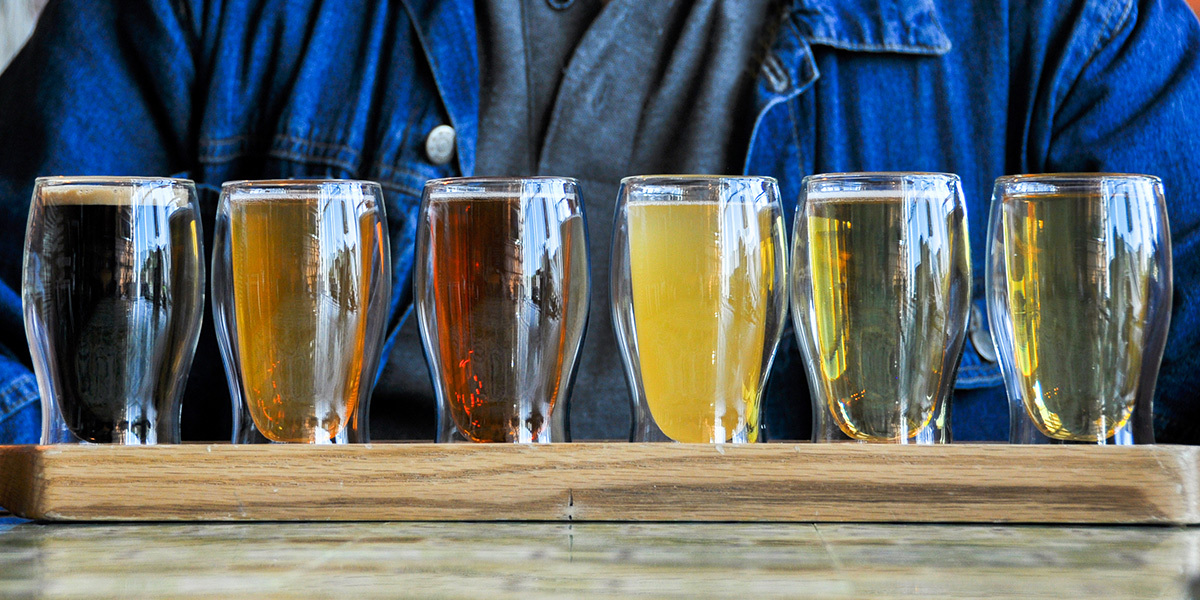

Tasting Tips For Your "Brew Buds"
DISCLAIMER: Please enjoy any alcoholic beverages responsibly, and never drink and drive.
Yearning to try a new brew, but don’t know where to start? No wonder. Domestic, imported and craft/microbrewed beers range in types (lagers and ales) and styles that run the gamut from light (pilsners) to dark (porters and stouts), and from low to high alcohol by volume (ABV). Let’s face it — there’s a lot out there to taste.
If you want adventure beyond the popular mainstream domestic pale lagers (Budweiser, Miller, Michelob and Coors) or their import counterparts (Corona, Stella Artois, Heineken), which all taste pretty similar, discover craft beers. Contrary to what many might think, craft beers are enjoyed by mainstream drinkers, too. The adventure is in trying a selection of types and styles by different makers.
But even when you’re looking at the same style of beer, you’ll see a lot of variation in from brewery to brewery. Case in point: The menu of ever-popular IPAs (India pale ales) is a long one, but nearly none taste the same.
“One IPA by one brewery won’t taste like an IPA made by another brewery,” explains Joe Hook, an assistant manager for ABC Fine Wine and Spirits.
At the end of the day, beer tasting is best taken as a subjective pursuit, Hook says. “The best way to explore beer is to be open minded and taste different types and styles from different makers to see what suits your unique palate.”
Hook advises making it easy and fun by going for the variety packs made by craft beer makers. For instance, New Belgium Brewing Company, based in Fort Collins, CO, offers year-round variety packs that typically include brews such as its Fat Tire amber ale and Voodoo Ranger IPA. The 100 percent employee-owned brewery also offers seasonal variety packs, such as a winter mix that may include its Snow Day black IPA and Mary Jane pale ale.
Don’t forget to check your local grocery and liquor stores, such as ABC and Total Wine, for their own mix-and-match programs, where you can grab an empty sleeve from the rack and fill it with a variety of beers to suit your interests.
Even better, visit one of your local craft breweries and order a flight, which allows you to try several smaller pours. Plus, you'll be able to chat with knowledgeable bartenders and perhaps the brewer him/herself.
Oh, and if you’re feeling adventurous, you can always try a beergarita or beermosa ... but let’s save that for another day.
Tasting Tips
In the meantime, while there are as many tasting tips as there are beers, here are a few of the basics from Kegworks and Beer Advocate to get you started on your adventure:
Temperature - Trying an ice-cold brew is not the best way to taste it. Really cold beer masks flavors, while a slightly warmer temperature lets its personality come through. A good rule of thumb is to take the beer out of the fridge and let it sit a few minutes before opening. And while we’re on the subject, don’t freeze the glass!
Pour - Contrary to what you learned in your keg-drinking days, beer should have a head of foam on it when poured. Hold your glass at a 45-degree angle and pour the beer down the inside until the glass is half filled. Then hold the glass up and pour the rest straight into it. The technique prevents trapping gas and thus swallowing it and belching.
Vessel - Drink from clean glassware, not the can or bottle. Not only does the beer look better, its aroma and taste come through more accurately.
Look/Smell - Look at and smell your brew before tasting it — and take notes. Is it clear or cloudy? Sweet, smoky, hoppy, floral or citrusy? Do those qualities appeal to you?
Taste - Sip and let your palate feel and taste the beer before swallowing it. Is it creamy, bold, light or bitter? Note its characteristics and whether they appeal to your “brew buds.”
A few other things worth considering:
- If you’re out to taste more than one style of brew during a session, drink mild, sweet beers first and rich, bitter beers last. Otherwise, you may over-stimulate your taste buds too early, making them less sensitive to delicate flavors.
- Don’t smoke tobacco right before or during a tasting. Cigarettes can dull your senses dramatically.
- Enjoy beers in the context for which they were intended. Keep in mind that some beers are made for certain situations — light and thirst-quenching for summer, darker and richer for winter or full of exotic spices and ingredients to help you experience certain cultures.
And perhaps the best tip of all: Don't take beer tasting too seriously, or you risk losing sight of the pleasure it can bring!









 Gear!
Gear! PRO LOGIN
PRO LOGIN